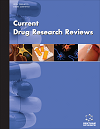
Full text loading...
Understanding the genetic foundations of brain development has been made possible by the use of traditional biological models. However, these models frequently fail to capture the complexity of human brain development, particularly the considerable cortical expansion that sets humans apart from other vertebrates and non-human primates.
The purpose of this review is to outline the methodology, applications, and potential prospects for using human brain organoids as sophisticated models for researching brain development and illness mechanisms.
Organoids, or three-dimensional (3-D) structures, are generated by utilizing adult or embryonic stem cells to mimic the main structural and functional features of the human brain. The present investigation emphasizes the advantages of these organoids over traditional two-dimensional (2-D) monolayer models in relation to cellular variety and the ability to create complex 3-D networks, addressing various methods established by researchers to culture these cells.
Organoids precisely mimic numerous features of human brain development, overcoming the limitations of conventional models. They have demonstrated significant utility in investigating the mechanisms that contribute to neurodegenerative diseases like Parkinson’s and Alzheimer’s, in addition to tumor biology, providing a valuable understanding of both the normal physiological processes and the underlying cause of the human brain.
Human brain organoids signify a notable progression in the field of neuroscience research, facilitating enhanced modeling of brain disorders. Future investigations will further enhance these methodologies and examine their applications, leading to innovative therapeutic strategies and broadening the knowledge of human brain disorders.

Article metrics loading...

Full text loading...
References


Data & Media loading...

